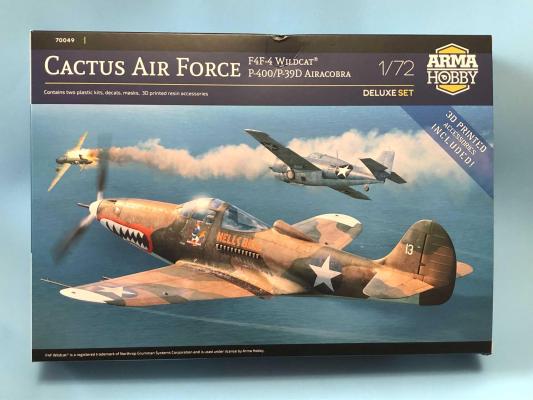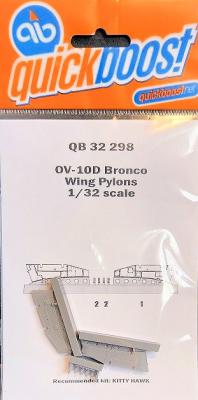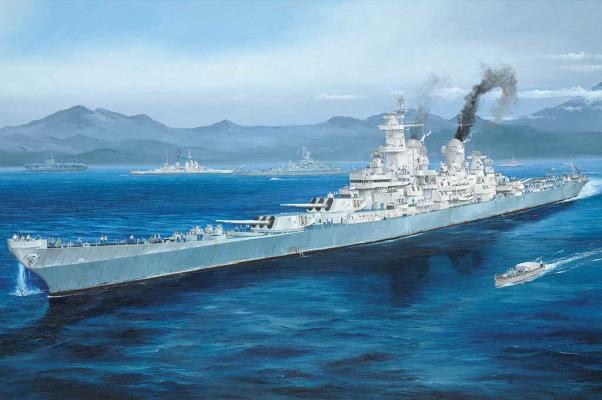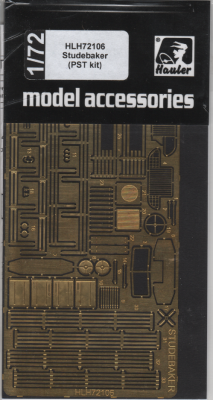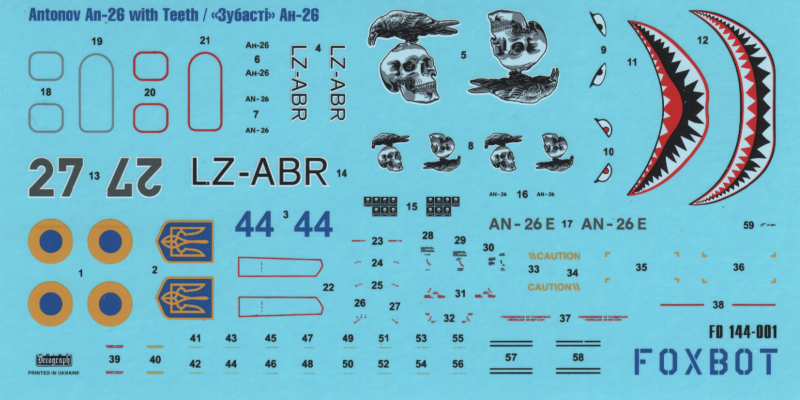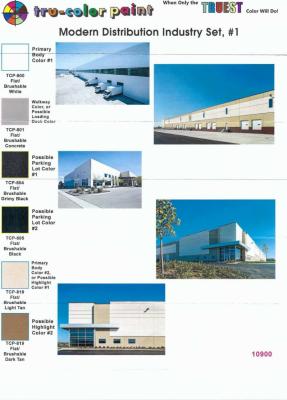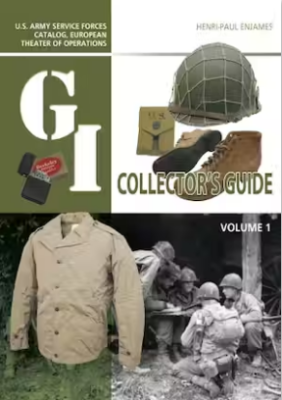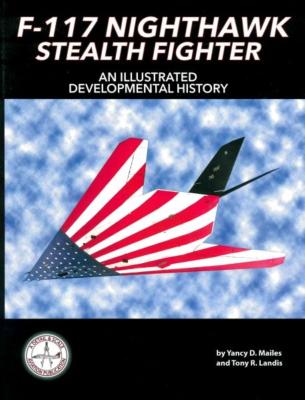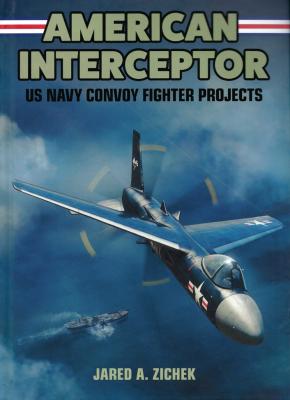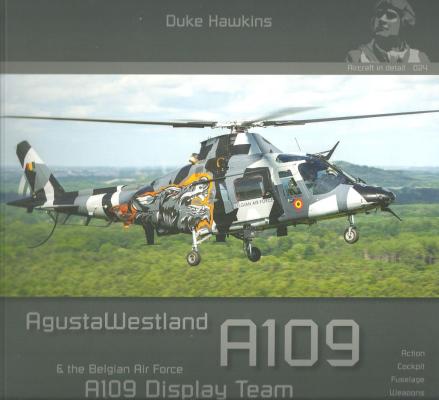Arma Hobby continues to build on their 1/72 scale inventory with the release of this Cactus Air Force Deluxe set. I have previously had the pleasure of reviewing their F4F-4 Wildcat Expert Set (kit 70047) as well as their P-39Q Airacobra (kit 70055) and this release essentially combines the two kits albeit with a different version of the Airacobra. With the addition of 3D printed parts for both aircraft, the already great level of detail is improved for some key areas. I highly recommend this kit to modelers experienced in handling small parts looking to represent the Cactus Air Force planes between August 1942 and February 1943.
What's New
Contents Description
Packaged within the recognizable clear wrapping with the bright orange Quickboost logo, you will find one instruction sheet and three resin castings. As with every Quickboost product, the quality is outstanding.
Instruction Guide
The fold-out instructional sheet shows the three casting parts on the left-hand side and the assembly guide on the right-hand side. It is important to note that the intended kit for this set is the 1/32 Kitty Hawk OV-10D. As indicated by the instructions, the Quickboost resin castings will replace kit parts H23 and H24.
Construction
Being that these are replacement parts, the construction is very straightforward. Carefully remove the parts from the casting blocks. I used a sharp #11 blade to make a score line and then used a microsaw to fully remove the parts. Caution: the resin pylons have two small mounting pins. Do not cut them off! The forward pin is tricky to spot.
Report 2: Midway through Construction
This second report covers the build from Steps 26 through 48 of 64. It is essentially the assembly of the upper decks prior to attachment of the stacks and their associated appurtenances.
Through this point in the build, most of the parts fit exceptionally well, to the extent that some can be press fit together. When you encounter one that doesn’t fit as well, like the life raft stacks, it makes you wonder if you are doing something incorrectly. The life rafts did not stack up evenly when placed one on top of another, so I used more glue than usual and clamped them in place after assuring they were parallel. Although good overall, one drawback of the tight fit is that a mere paint layer could interfere with making a tight joint or may require a pinhole to be reamed out before being able to attach a part.
The Subject
The Studebaker US6 (G630) was a series of 2+1⁄2-ton 6×6 and 5-ton 6×4 trucks manufactured by the Studebaker Corporation and REO Motor Car Company during World War II. The basic cargo version was designed to transport a 2+1⁄2-short-ton (5,000 lb; 2,300 kg) cargo load over any type of terrain in any weather. Most of these were exported to the Soviet Union under Lend-Lease by the USA during World War II, since the competing GMC 6×6 CCKW design proved to be more suitable for Western Front conditions. (Source - Wikipedia)
The Item
If you want to bring your Studebaker US-6 Cargo Truck model kit to the next level, this excellent photoetch detail set is just the thing for you. This extensive PE sheet has most of the appliqués that can be added to the kit to provide a fully detailed rendering of the Studebaker vehicle.
AN-26 History From Wikipedia
While the An-24T tactical transport had proved successful in supporting Soviet troops in austere locations, its ventral loading hatch restricted the handling of cargo. As a result, a version (An-26) with a retractable cargo ramp was designed that allowed the cargo deck to be sealed and pressurized in flight.
The An-26 includes military equipment, such as tip-up paratroop canvas seats, an overhead traveling hoist, bulged observation windows and parachute static line attachment cables. It can be configured in 20-30 minutes from the troop transport or freight mission to the medical evacuation role with up to 24 stretchers fitted.
The Decals
Continuing FOXBOT’S tradition of excellence from Ukraine, these decals are excellent in both registry and color. The carrier film has both minimal margins and thickness making the very pliable for contour and feature coverage.
Rick Galazzo and Scott Cohen started Tru-Color Paint in Phoenix, Arizona, in 2008, based on their experience in formulating paint for the commercial market. They reformulated the former Accupaint formulas and created this paint line. It is refreshing to see that in today’s day and age with model kits and supplies moving overseas, that these paints are made in the USA. They have five paint lines including automotive, aircraft, naval and military colors, including many sets to make a project easier by having all the colors in one box. Another huge bonus for me is that Scott Cohen wrote a personal letter explaining the paints for review, a request for new paint color suggestions, and genuinely supporting modelers and IPMS. Based on all this, I was eager to try these paints for myself.
Henri-Paul Enjames started collecting uniforms and equipment of the American soldier in Europe during the 19 43–1945 period. He was fascinated by the power of the United States Army and how it supplied soldiers with the most modern equipment and uniforms. His collection includes items in the best possible condition, many with readable markings providing information about manufacture dates and models. He used a 1943 Quartermaster Corps supply catalog to organize and show his collection. His intention with this book is to gather as much information as possible on the uniforms and equipment of the American soldier in Europe to illustrate authentic items.
Enjames’ Collection is shown in high-quality color photographs of the actual items with captions of the articles name, number, and years of use. Additional text provides background on the equipment illustrated.
The chapters are organized similar to the 1943 QMC Supply Catalog:
F-117 Nighthawk Stealth Fighter – An Illustrated Developmental History is a fantastic book on the development of this remarkable aircraft. There is no operational history nor combat-related photographs in this book. And it should not, nor does it, detract from the book. The development of stealth technology and this record-breaking aircraft deserves its own story. The aircraft and dedicated people that made it possible is brilliantly told and photographed in this book.
The book is presented with five chapters:
Mortons Media Group was established in the 19th century and has been producing book-length publications since the early 2000s. The company established a dedicated books division in 2019 and Mortons Books has already earned a reputation for publishing high-quality titles by authors who are true experts in their field. For the best reads on rail, aviation, nostalgia and history, look no further. This book is part of their imprint: Tempest Books addresses all aspects of aviation history are covered in authoritative detail. The aviators and aircraft of the Second World War are profiled by our titles alongside more modern fighters, bombers, reconnaissance aircraft and transports. 'Secret projects' and experimental designs are also an important part of the Tempest Books portfolio.
HMH Publications has released another installment of the Duke Hawkins series and it is being distributed in the US by Casemate Publishers.
The 24th installment of the series is devoted to the Agusta Westland A109 helicopter.
In particular this book includes images of helicopters serving with the Belgian Air Force Demonstration Team, plus images of Italian, New Zealand, South Africa and British examples.
The book is organized in the following sections: Types, Belgian Air Force (BAF) Demonstration Team, Forward Fuselage, Fuselage, Main Rotor, Tail Rotor, Cockpit, Main Landing Gear, Vertical Tail, Horizontal Tail, Maintenance and Action.

